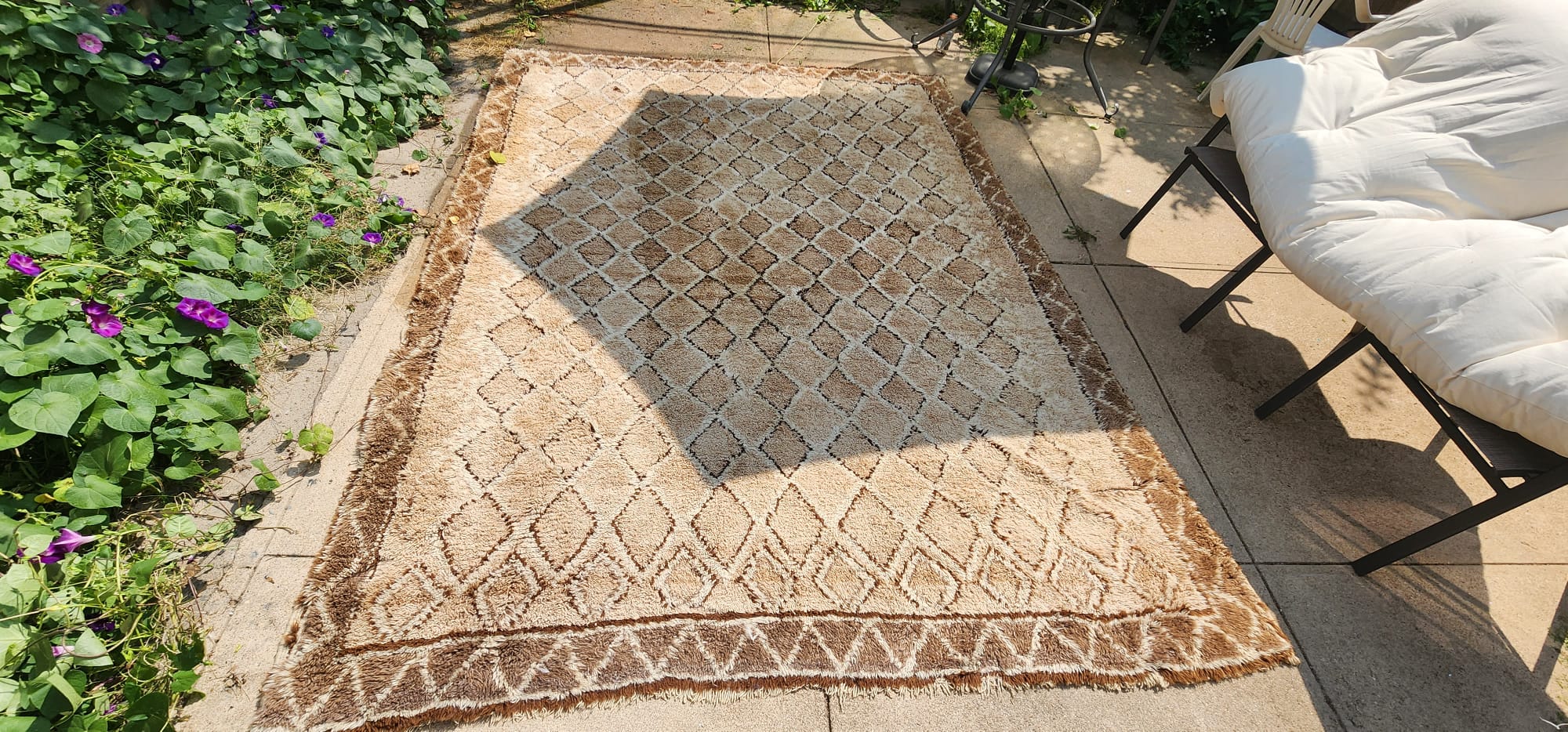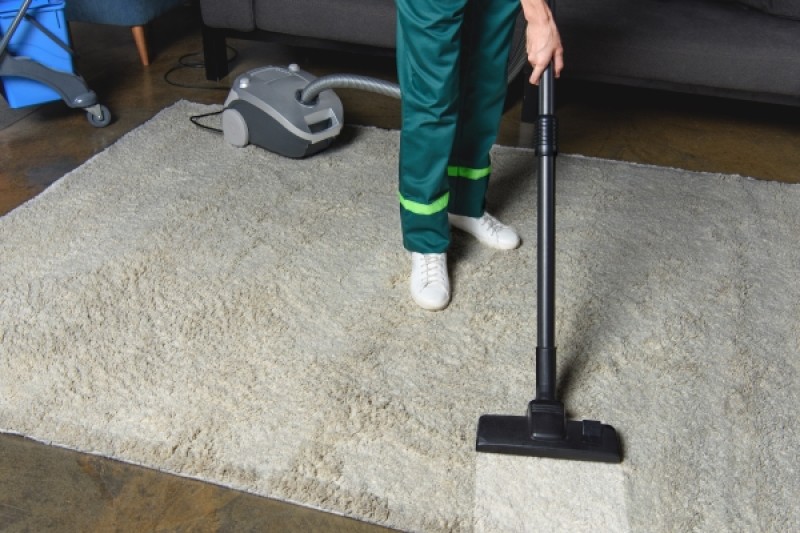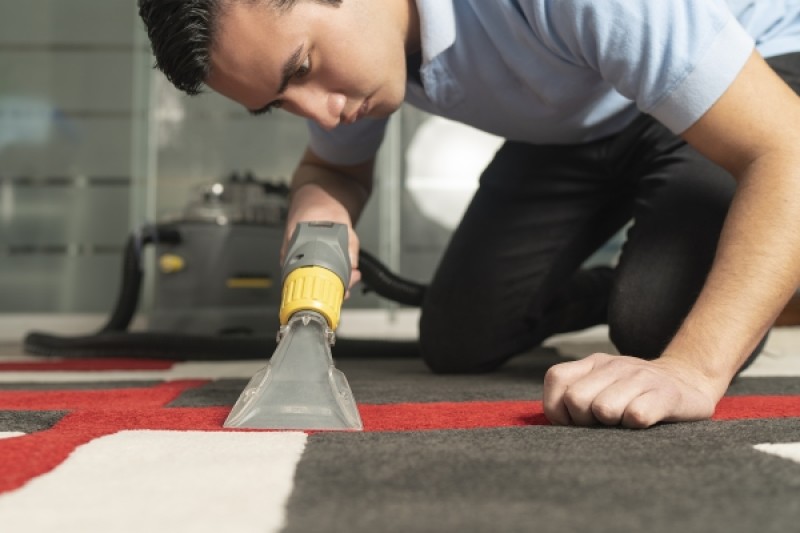Carpet adds elegance and a sense of warmth and comfort to your room. However, to maintain the look and appearance of the carpet, you should wash it at least once every 18 months. Among the various problems, dye migration is a common issue that can arise when cleaning with rug shampoo. The result is the carpet looks worse due to undesirable dye transfer.
Most individuals opt for rug cleaning services only after they have damaged their carpets have been damaged. To avoid this situation, you can select two options. The first is hiring the best carpet cleaning services near you. The second is acquiring knowledge about carpet dyes before using rug shampoo. Understanding how dye transfer occurs and learning how to prevent it. Read the full guide to obtain this information.
What Exactly is the Rug Bleed or Rug Transfer?
Rug bleed is a straightforward term that refers to describes the transfer of the dark dyes to the light dye area. Simply, the dark color seeps into the white area of the rug. If this occurs to your expensive oriental or wool rug, nothing can be more frustrating. The two types of dyes, both synthetic and natural dyes, require distinct cleaning procedures.
Naturally dyed rugs necessitate dry cleaning, whereas synthetically dyed rugs need steam cleaning. Steam cleaning a rug at home can be tricky so opt for professional carpet steam cleaning services. Different causes can lead to dye transfer. You have to maintain the pH of the rug dyes and the rug shampoo so as not to let the dye rinse or leak. Before you proceed with the rug shampoo, you must have complete knowledge of rug dyes for better cleaning.
Types of Carpet Dyes
Basically, there are two types of carpet dyes, synthetic and natural dyes. The natural dyes contain the colors that come from the vegetables. Dyers use two techniques for vegetable dyeing, double dyeing, and depleted dye baths. Here are the various colors that are produced from natural dyes.
Red Dyes
Red dyes, commonly sourced from madder plants, safflower, and certain insects, impart warmth and vibrancy to carpets. The characteristics of red dyes vary depending on their source. They are often chosen for their ability to evoke a sense of richness and elegance in carpet designs.
Blue Dyes:
Derived from the fermentation of the indigo plant, blue dyes offer a cool and calming color palette for carpets. These dyes are known for their deep and lasting hues. Making them a popular choice for creating visually appealing and serene carpet designs.
Yellow Dyes
Yellow dye is a vibrant coloring agent used in various industries, from textiles to food. It's derived from the pomegranate peels or weld and adds warmth and brightness to a wide range of products.
Green Dyes
Green dye, derived from plants like weld or saffron, is then further dyed with indigo. It serves as an eco-friendly alternative to synthetic dyes.
Black Dyes
Black carpet dyes are often obtained by dying dark-colored wood with an excess of orange or red. The resulting color adds a sophisticated and dramatic touch to carpets. Black-dyed carpets are favoured for their ability to complement a variety of interior design styles.
Brown Dyes
Brown dyes, aside from those obtained from brown sheep, can be derived from nutshells. Brown carpets are appreciated for their earthy and neutral tones. They are making them versatile in various home settings. The use of brown dyes provides a natural and timeless aesthetic to carpet designs.
Orange Dyes
Orange dyes, crafted from reagents lіke saffron or achieved through excessive dyeing with madder red, infuse carpets with vibrant energy and warmth. Ideal for creating a playful and lively ambience, orange dyes add a lively touch to interior spaces, making them stand out with a burst of color.
For general chemical dyeing, the carpet is heated with various organic compounds. The fabric reacts with these organic compounds and the color adheres to the carpet. Among the synthetic dyes, chromic carpet dyes are widely used and considered as long-lasting as vegetable dyes. Moreover, it can produce a variety of colors not found in vegetable dyes. Chromic dyes involve the use of a chromic reagent, potassium chromate.
How Rug Shampoos Affect the Dyes
Different scenarios can affect the dye of your carpet. Examine common possibilities that can be avoided. The dyes may lighten during the initial carpet wash, especially if there are excess dyes in its fiber. A simple carpet cleaning solution is the use of a stabilizing spray, which prevents the transfer of dyes to lighter areas. Over-dyes from processes like tea wash or ink dyes.
The tea wash treatment is applied to the rugs to replicate the old and antique appearance look. If your carpet undergoes a low-quality tea treatment, it will readily exhibit dye transfer. The increased risk of using cleaning with carpet shampoo is associated with comes with the ink dyed rugs. The ink dye rugs are darker in color to achieve an antique look. You can easily identify the ink dye rugs, as they have a different base. Simply, open up the fiber and you can observe ink. Cleaning these rugs is challenging to clean. So, it is advisable to hire an upholstery cleaning service for effective cleaning to safeguard rug dyes from potential damage.
The dye will also run out on the wool and silk fibers with the rug shampoo. Residues that are left behind in the carpet affect the acidic dyes and cause dye transfer. Both the Persian and Oriental rugs are also susceptible to dye bleed. The handmade and machine-made Oriental rugs lead to the leakage of dyes into the white areas. Therefore, people prefer to buy natural dye Persian rugs as compared to synthetic dyes because they are easier to clean.
How to Test Your Carpet Dye Before Rug Shampoo
As we stated, most of the dyes are susceptible to washing out or transferring if you use rug shampoo. So, a simple step will save your carpet from damage. Take a clean towel and dip it in the hot water. Roll the towel over the carpet. If the color appears on the towel, avoid cleaning at home. It will cause dye transfer on your carpet. You can take a pH spotter test to locate the stability of the dyes. The lower the pH of the rug dye, the better its stability will be.
What to Do After the Towel Dye Test?
The next step is to use a stabilizer solution for your rug cleaning. The stabilizing solution is not a single solution, but it will protect the dyes from bleeding. Even the rugs will bleed if you use a stabilizer solution. Therefore, the safest method is to hire an upholstery and rug cleaning service in NYC. You cannot manage to handle the carpet cleaning with the rug shampoo if the dyes are not stable.
Contact Us for Professional Carpet Cleaning in NYC
If you want to prevent your rug dyes from mixing up and safeguard your carpet investment, contact PristineGreen Cleaning. We are the best rug cleaner in NYC, offering you a high-standard carpet cleaning solution. Understanding your needs, and therefore we offer the best carpet cleaning services. You don’t have to concern yourself with rug dye, rug shampoo, and the dye test, we will handle everything. Whether you have a hand-made, oriental, or synthetic-dyed carpet, we use safe materials to stabilize the pH of the carpet.
Our basic services fulfill the requirements of every carpet type and stand out are prominent among carpet cleaning companies. You can call us for the following carpet cleaner services.
Don’t hesitate, simply contact us and we will determine the best type of rug shampoo to clean your carpet. Our technicians at PristineGreen Cleaning are experts in the delicate handling of the fabrics of your carpet to maintain the nature and color of your dyes.
Frequently Asked Questions
To maintain the look and appearance of the carpet, you should wash it at least once every 18 months.
Naturally dyed rugs necessitate dry cleaning, whereas synthetically dyed rugs need steam cleaning.
Basically, there are two types of carpet dyes, synthetic and natural dyes.
Among the various problems, dye migration is a common issue that can arise when cleaning with rug shampoo.
Rug bleed is a straightforward term that refers to describes the transfer of the dark dyes to the light dye area.
A simple carpet cleaning solution is the use of a stabilizing spray, which prevents the transfer of dyes to lighter areas.
If your carpet undergoes a low-quality tea treatment, it will readily exhibit dye transfer.
The next step is to use a stabilizer solution for your rug cleaning.
The dye will also run out on the wool and silk fibers with the rug shampoo. Residues that are left behind in the carpet affect the acidic dyes and cause dye transfer.
Therefore, people prefer to buy natural dye Persian rugs as compared to synthetic dyes because they are easier to clean.




